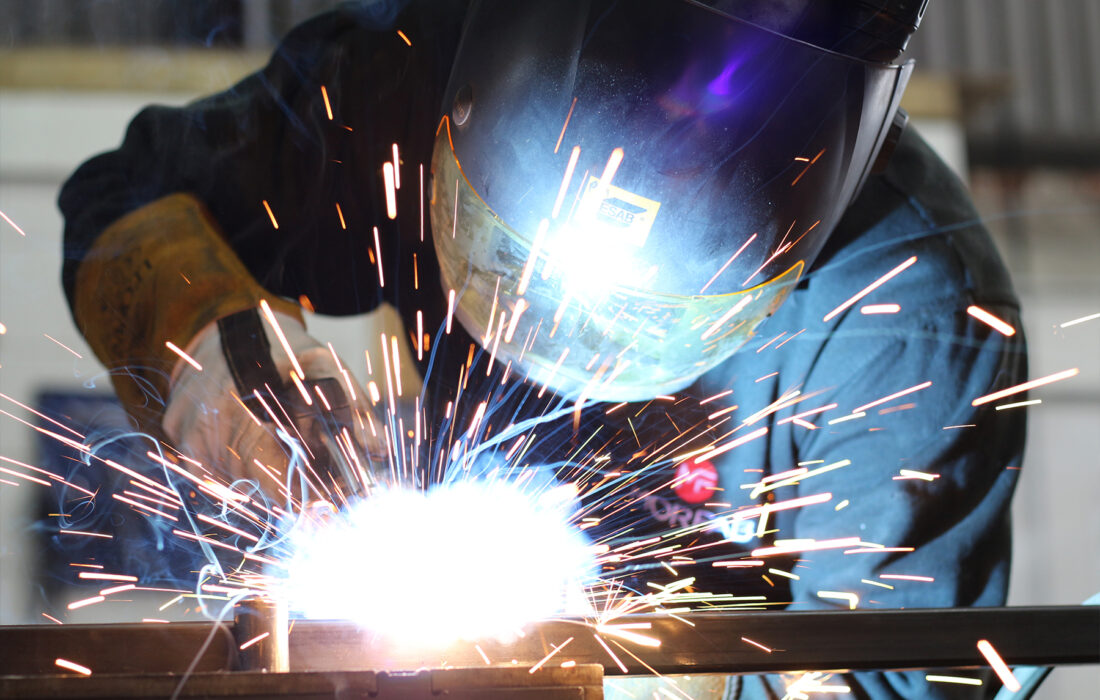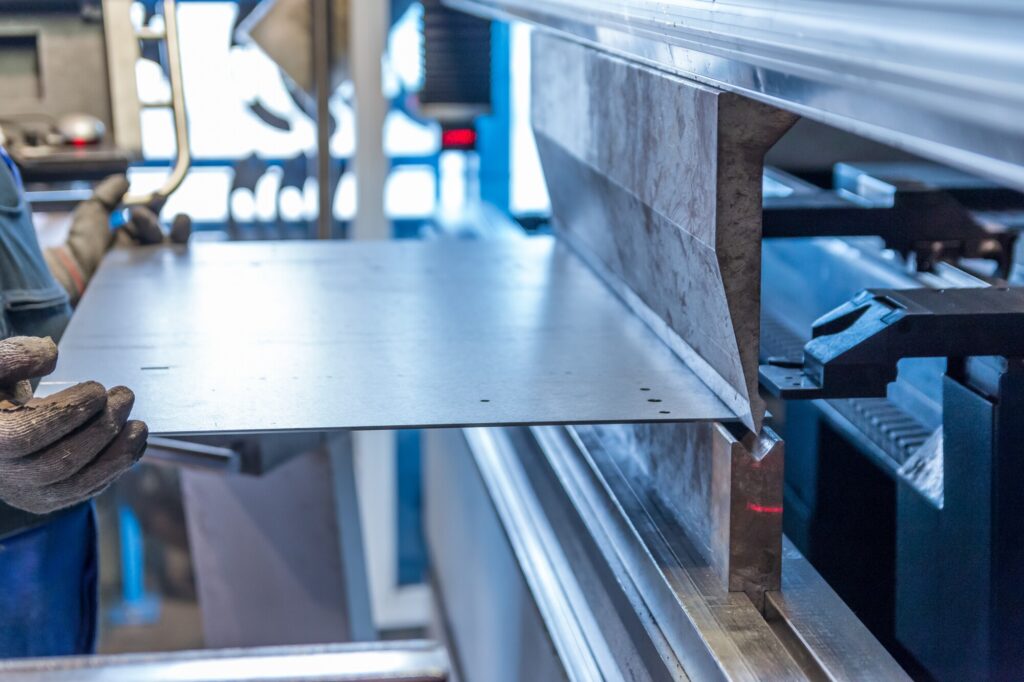Reputable Steel Fixing Providers: Guaranteeing Architectural Stability
Reputable Steel Fixing Providers: Guaranteeing Architectural Stability
Blog Article
Comprehensive Analysis of Cutting-Edge Techniques in Steel Manufacture Sector
As the steel construction market proceeds to advance, the combination of innovative strategies has actually come to be important for staying affordable and fulfilling the demands of contemporary manufacturing standards. From laser reducing developments to the application of robotics and 3D printing in steel manufacturing, the landscape of manufacture methods is rapidly altering. With each technology bringing its very own set of advantages and challenges, an extensive evaluation of these strategies is paramount for firms aiming to enhance their processes, improve accuracy, and ultimately, raise the top quality of their steel fabrication outcome. In this vibrant industry where innovation plays a pivotal function, recognizing the subtleties of these advanced techniques is not simply an option however a requirement for those aiming to advance in the ever-evolving globe of steel manufacture.
Laser Reducing Improvements
In the world of steel construction, laser reducing improvements have changed the accuracy and effectiveness of steel shaping procedures. By using the power of focused laser light beams, suppliers can now accomplish unequaled degrees of accuracy when cutting through various kinds of steels. This innovation allows complex styles to be performed with minimal product wastefulness, making it a cost-efficient option for markets requiring high precision components.
Among the essential benefits of laser cutting is its capacity to manage a variety of products, consisting of stainless steel, aluminum, and carbon steel, easily. The procedure generates tidy, burr-free edges, eliminating the demand for extra completing actions. Moreover, the non-contact nature of laser reducing lowers the danger of product contamination, leading to better output.
Additionally, laser cutting makers can be programmed to make swift, exact cuts, considerably minimizing production time contrasted to conventional cutting methods. This rate and accuracy make laser reducing specifically ideal for mass manufacturing atmospheres where performance is critical. As modern technology remains to breakthrough, laser cutting is poised to play a progressively vital role in the steel construction sector.

CNC Machining Innovations
The advancement of CNC machining technologies has ushered in a brand-new period of accuracy and efficiency in the steel construction market. Computer System Numerical Control (CNC) equipments have transformed steel manufacture by providing unequaled precision and repeatability in the production procedure. steel fabricators melbourne. One of the crucial advancements in CNC machining is the assimilation of innovative software program systems that make it possible for real-time monitoring and adjustments, leading to enhanced productivity and quality control
Additionally, the growth of multi-axis CNC equipments has permitted the manufacture of complex steel parts with detailed layouts that were formerly testing to create. These devices can carry out a wide variety of machining operations, including milling, exploration, transforming, and grinding, all with high degrees of precision.
Furthermore, the incorporation of automation and robotics in CNC machining has structured manufacturing processes, decreased lead times, and minimized the margin of mistake. This combination of innovative innovations not only enhances effectiveness however likewise ensures regular top quality across all fabricated steel components. In final thought, CNC machining developments remain to drive innovations in the steel fabrication sector, setting brand-new requirements for precision and performance.
Automated Welding Technologies
Automated welding innovations have actually reinvented the steel fabrication market, boosting efficiency and accuracy in the welding process. These sophisticated innovations make use of computer-controlled systems to automate the welding process, leading to higher productivity levels and boosted weld quality. Among the key advantages of automated welding is the ability to do intricate welds with constant accuracy, lowering the possibility of mistakes and rework.
Robotic welding systems go to the forefront of automated welding innovations, offering unequaled speed and accuracy. These systems can take care of a variety of welding tasks, from easy to detailed, easily (metal fabrication melbourne). By using sophisticated sensors and software application, robot welders can adjust to variants in material and joint geometry, guaranteeing an attire and reliable weld
Additionally, automated welding modern technologies improve work environment security by decreasing the exposure of human welders to hazardous fumes wikipedia reference and intense warm. As the steel construction sector proceeds to evolve, incorporating automated welding innovations will be necessary for firms aiming to remain affordable and fulfill the expanding demands for high-grade bonded items.
Robotics Assimilation in Manufacture
Making use of robot systems in manufacture procedures has actually become a critical technique for improving efficiency and precision in modern manufacturing settings. Robotics assimilation in steel manufacture uses a myriad of advantages, consisting of raised performance, boosted quality assurance, and improved precaution. These advanced robot systems are furnished with advanced sensors and programming capacities, permitting them to perform intricate jobs with a high level of accuracy and repeatability.
Among the crucial advantages of robotics assimilation in steel construction is the ability to automate repeated jobs, such as material handling, cutting, welding, and setting up processes. This not only quickens production cycles but additionally decreases the danger of human error, leading to greater general item high quality. Additionally, robotics can operate 24/7, significantly increasing production outcome and meeting limited project target dates.

3D Printing in Steel Manufacturing
Having actually revolutionized the steel manufacture sector through robotics assimilation, the burgeoning exploration of 3D printing in steel production is poised to more advance the realm of contemporary production techniques. 3D printing, also referred to as additive production, provides extraordinary style flexibility and complexity, allowing the development of intricate steel structures that were previously unattainable via conventional manufacturing techniques. By utilizing computer-aided style (CAD) software application, manufacturers can exactly regulate the layer-by-layer deposition of steel material, resulting in get rid of enhanced geometries and performances.
One of the key advantages of 3D printing in steel production is its capacity to lower material waste significantly. Unlike subtractive manufacturing procedures where excess product is trimmed away, 3D printing only utilizes the required amount of steel needed for the final part. This performance not only results in cost savings Read Full Report however additionally straightens over at this website with lasting manufacturing methods by decreasing ecological influence.
In addition, 3D printing allows rapid prototyping and customization, enabling the manufacturing of little batches of complex steel components with brief preparations. As the innovation continues to grow and end up being much more easily accessible, its integration right into mainstream steel manufacture procedures is anticipated to drive technology and effectiveness across the market.
Final Thought
In conclusion, the steel construction sector has actually seen substantial innovations in techniques such as laser cutting, CNC machining, automated welding, robotics combination, and 3D printing. These advanced technologies have changed the way steel items are manufactured, bring about increased effectiveness, cost-effectiveness, and accuracy. Proceeded financial investment in these cutting-edge techniques is critical for the market to remain competitive and satisfy the needs of modern-day manufacturing procedures.
As the steel manufacture market proceeds to evolve, the integration of sophisticated methods has ended up being necessary for remaining competitive and satisfying the needs of contemporary production standards.One of the key benefits of laser cutting is its capability to manage a broad range of materials, consisting of stainless steel, light weight aluminum, and carbon steel, with simplicity.Automated welding innovations have revolutionized the steel manufacture industry, improving effectiveness and accuracy in the welding procedure.Having actually reinvented the steel manufacture sector through robotics combination, the burgeoning exploration of 3D printing in steel manufacturing is poised to further advancement the realm of contemporary production methods.In conclusion, the steel construction industry has seen considerable advancements in methods such as laser cutting, CNC machining, automated welding, robotics integration, and 3D printing.
Report this page